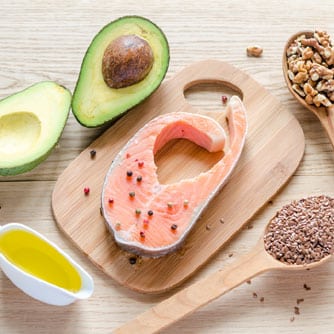Abdominal fat – fat that surrounds the internal organs – is considered to be a risk factor for type-2 diabetes. Frederik Rosqvist, from Uppsala University (Sweden), and colleagues enrolled 39 young adult men and women of normal weight, who ate 750 extra calories per day – either of polyunsaturated fat, or saturated fat – for 7 weeks. Both diets otherwise contained the identical amount of sugar, carbohydrates, and protein. Using MRI (magnetic resonance imaging) to assess the increase in body fat and distribution of fat in the body, as well as changes in muscle mass during the study period, the researchers found that the excess consumption of saturated fat resulted in a significantly greater increase in the amount of abdominal fat, as compared to the subjects who consumed the extra unsaturated fat. The saturated fat group also displayed more total amount of body fat, as well as muscle mass that was three times less, as compared to the unsaturated fat group. The study authors conclude that: “overeating [saturated fat] promotes hepatic and visceral fat storage whereas excess energy from [polyunsaturated fats] may instead promote lean tissue in healthy humans.”
Unsaturated Dietary Fat Prevents Unwanted Body Fat
Rosqvist F, Iggman D, Kullberg J, Jonathan Cedernaes J, Riserus U, et al. “Overfeeding Polyunsaturated and Saturated Fat Causes Distinct Effects on Liver and Visceral Fat Accumulation in Humans.” Diabetes. 2014 Feb 18.
RELATED ARTICLES




